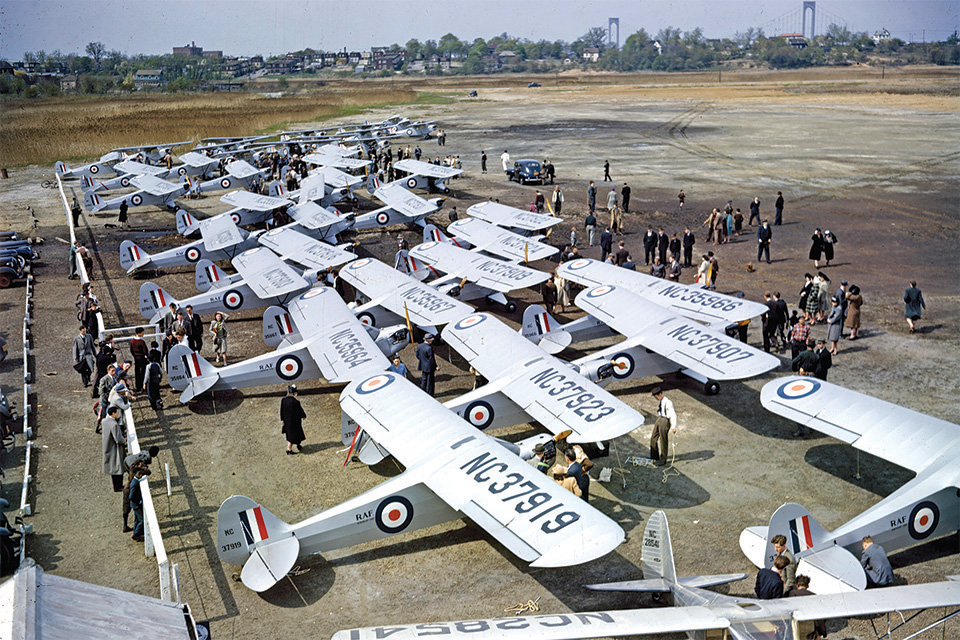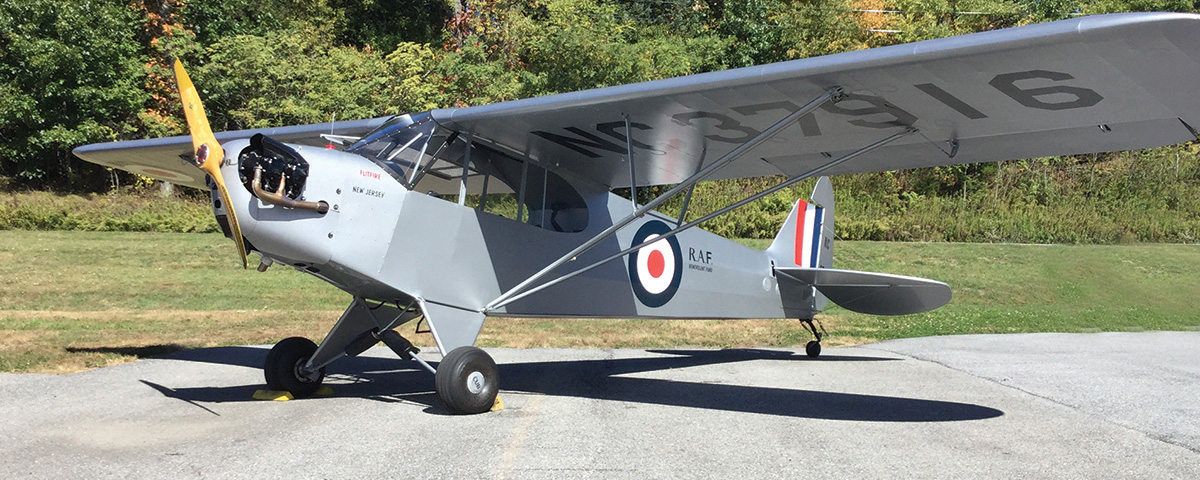When a Piper J-3 Cub owner learned that his airplane boasted an unusually historic provenance, he restored it to its original appearance.
The summer and autumn of 1940 was a dark time for the people of Great Britain. As the Luftwaffe mounted a massive air campaign to destroy the Royal Air Force in advance of Hitler’s planned invasion of the island nation, RAF pilots flew numerous missions each day and suffered devastating casualties. It was of these pilots that Churchill would say, “Never in the field of human conflict was so much owed by so many to so few.”
The families of the brave British pilots were aided by the RAF Benevolent Fund, a charity established after World War I. In 1941 extra support for the fund came from William T. Piper, president of the Piper Aircraft Corporation, who decided to donate a J-3 Cub as a prize in a fundraising effort. Each Piper dealership across the United States also donated one Cub to represent its state. The planes were dubbed “Flitfires,” an allusion to the British Supermarine Spitfire. They were manufactured at Piper’s Lock Haven, Pa., factory in April 1941 and painted silver with RAF insignias, roundels, and a red, white and blue flash on the tail. “Royal Air Force Benevolent Fund” was painted on the fuselage.
The airplanes, soon known as the Flitfire Brigade, flew in formation from Lock Haven to New York City on April 27, 1941. The brigade approached from Staten Island, making a fly-by of the Statue of Liberty and heading north over Manhattan up to the George Washington Bridge. The Cubs then turned south, flying past the Empire State Building and then east to Flushing Field, which no longer exists.

Two days later, the Flitfires flew to New York Municipal Airport, now known as LaGuardia. It’s claimed the brigade’s arrival was the largest mass landing to date. Fashion models christened the Cubs by popping balloons fastened to the propellers, and William Piper presented the airplanes to Thomas Beck, president of the RAF Benevolent Fund. That evening, a black-tie fundraiser was held at the airport, attended by celebrities and business and civic leaders, followed by the raffle of the first Flitfire. In total, the gala raised $12,000 for the fund.
The next day, the 48 remaining Flitfires set out on fundraising tours, each flying to its namesake state. Some Piper dealers used the Flitfires to raise money for the fund by selling rides, others were raffled off and some were sold. The first Flitfire was flown across the U.S. on a War Bond tour by several famous pilots, including Orville Wright, and then sold.
Some 60 years later, Rod McKenzie, a corporate pilot in Danbury, Conn., was at home one night when the phone rang. The caller was “some British guy asking him about his Flitfire,” McKenzie said. He’d never heard of them before and certainly didn’t know that his little yellow Cub was one of the 49 fundraising planes from WWII. He’d found the Cub on a ranch in Montana in 1992 and flew it to Connecticut, where he flew it for fun until 2001. After years of being tied down on the airport field and then enduring a hailstorm, which made the insurance company “write it off,” the Cub was grounded.
As with many airplane restoration projects, it started slowly, and serious work didn’t begin until 2008, when the J-3 was delivered to Clyde Smith, the “Cub doctor” at Lock Haven. During the winter of 2014-15, McKenzie increased his efforts to complete the restoration by enlisting the help of Bob Hunt, a fabric plane specialist. Hunt re-covered the fuselage and wings and painted them silver with the original military insignia, then delivered the parts to McKenzie’s home airfield, Sky Acres Airport, near Union Vale, N.Y. Since McKenzie “didn’t want a museum piece, but a safe and flyable airplane,” he made a few modifications. He selected a 90-hp Continental engine over the original 65-hp Lycoming and added disc brakes. While Hunt completed the fabric work and painting, the engine was refurbished by Dan Fogle in North Salem, N.Y. Together, the two craftsmen and McKenzie assembled the plane in time for the 2015 fly-in of Piper aircraft at Lock Haven. There, the meticulously restored “New Jersey Flitfire” won the award for Best J-3 Cub.
Almost 75 years earlier, in August 1941, a high school student had won the New Jersey Flitfire in a raffle at the Basking Ridge Fire Company carnival. He immediately sold it to the Army Air Corps flight training school at Somerset Hills Airport.
McKenzie says FAA records reveal 23 different owners of this Cub. Through the years, it resided in New Jersey, Pennsylvania, Indiana, Illinois, and North and South Dakota. It went through numerous engine changes, mounting Franklin, Continental and Lycoming power plants at one time or another. The Cub had been a crop duster, and it had even been wrecked.
After the war, many Flitfires made their way to private owners. They were usually repainted in the traditional Cub yellow, and their wartime history was forgotten. Today there are evidently only four Flitfires painted in the original silver scheme, two on display and two flying. Besides the New Jersey Flitfire, the Indiana Flitfire has been seen on airfields. Piper’s original Flitfire is on display at the North Carolina Aviation Museum in Asheboro, and the Wisconsin Flitfire is displayed at Rickenbacker International Airport in Columbus, Ohio. Many others are flying under yellow paint jobs, likely with pilots who are unaware they own a piece of American history.
This article originally appeared in the January 2018 issue of Aviation History. Subscribe here!

